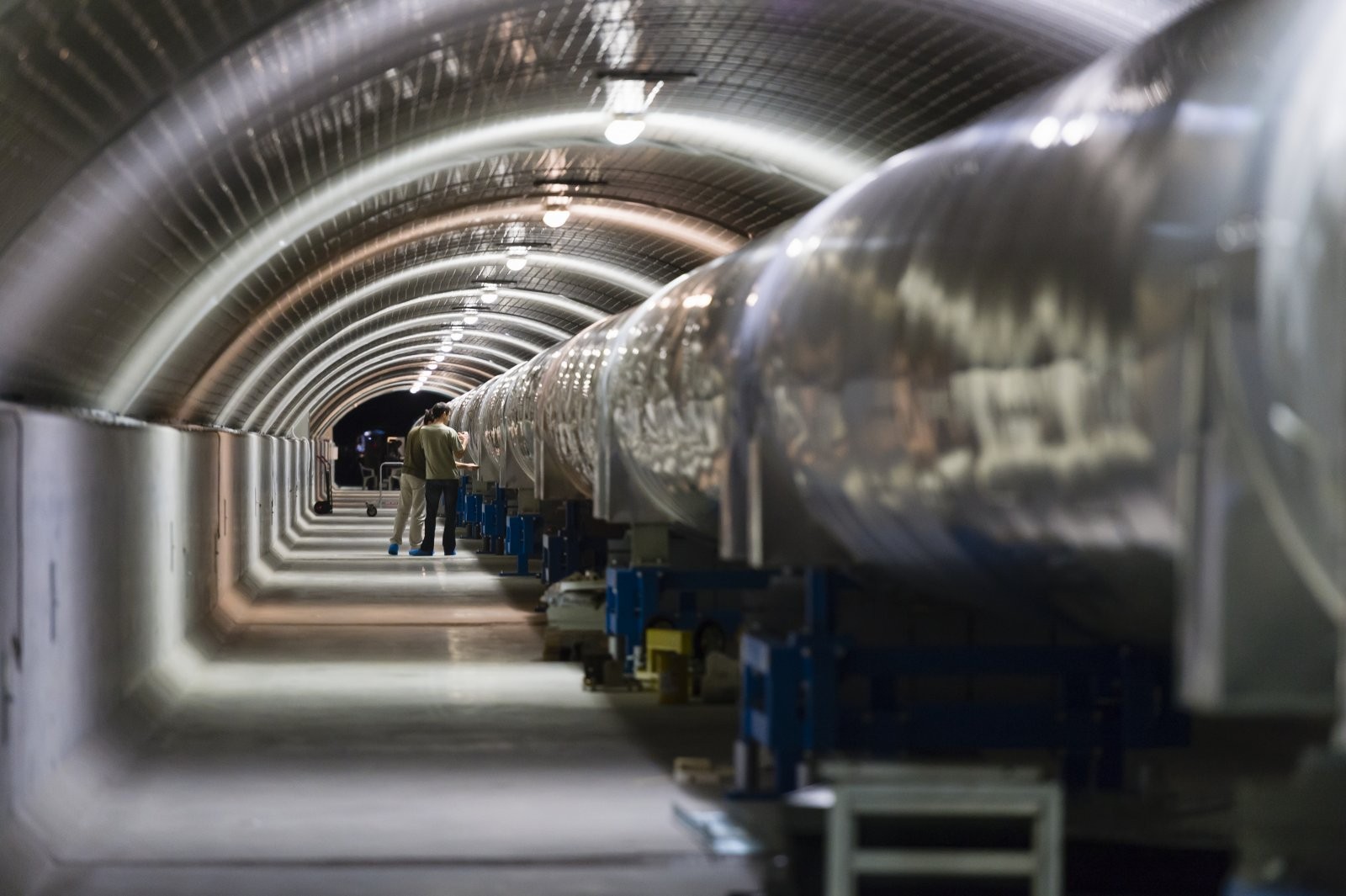VIRGO-PL

We are part of the Polish Virgo Project Consortium, which participates in the development of the Virgo gravitational wave observatory.
Exploring the Universe
Virgo is a laser interferometer with two perpendicular arms, each 3 km long: its goal is to detect gravitational waves from astrophysical sources. It is located at the European Gravitational Observatory in the countryside near Pisa, Italy. The Virgo detector enables the recording of gravitational waves emitted, among others, during the merging of binary systems of neutron stars or black holes, or supernova explosions. The direct detection of gravitational waves allows the study of objects that do not emit electromagnetic radiation, as well as the direct study of the interiors of neutron stars. This makes it possible to investigate phenomena undetectable by other methods and to explore distant corners of the Universe.
Polish collaboration for Virgo
The main task of ACC Cyfronet AGH is to support computing for the Virgo gravitational wave detector and to integrate with the International Gravitational-Wave Observatory Network. These activities are part of the project "Virgo-PL: Polish participation in the Virgo gravitational wave observatory", carried out within a consortium. The consortium includes: the Institute of Mathematics of the Polish Academy of Sciences (IMPAN) - leader, the Nicolaus Copernicus Astronomical Center of the Polish Academy of Sciences (CAMK PAN), the Academic Computer Centre Cyfronet, the AGH University of Krakow (Cyfronet), the National Centre for Nuclear Research (NCBJ), the University of Białystok (UwB), the Jagiellonian University (UJ), and the University of Warsaw (UW).

One of the 3-kilometer tunnels of the Virgo detector, through which laser light travels © Cyril FRESILLON / Virgo / CNRS Photothèque.
CTAO

Cyfronet has for years been one of the institutions representing Poland in the Cherenkov Telescope Array Observatory (CTAO) Consortium.
About CTAO
CTAO will be the world's largest gamma-ray astronomy observatory. The unmatched precision and wide energy range of CTAO (20 GeV - 300 TeV) will help answer some of the most puzzling questions in astrophysics, covering three main topics: understanding the origin and role of relativistic cosmic particles; studying extreme systems such as black holes or neutron stars; and exploring the frontiers of physics, searching for dark matter or deviations from Einstein's theory of relativity.
Cyfronet's role in CTAO
Cyfronet's involvement mainly concerns providing supercomputing infrastructure for processing research data used by project partners. Additionally, Cyfronet is engaged in work on the Science Portal as part of the Science User Support System package.
The Science Portal is an application that includes a range of tools for scientists using CTAO, including:
- requesting observation time for specific objects;
- checking the status of observations;
- quick analysis of initial results;
- reviewing past, completed observations.
In this case, Cyfronet's role is to integrate various components of the Science Portal so that the end user can access all the necessary resources in one place.

Visualization of the future CTAO-North observatory at the Roque de los Muchachos Observatory on La Palma (Spain). The planned telescope network layout includes 13 telescopes: four Large-Sized Telescopes (LST) and nine Medium-Sized Telescopes (MST). (Source: CTAO, CC BY-NC-ND 2.0).
